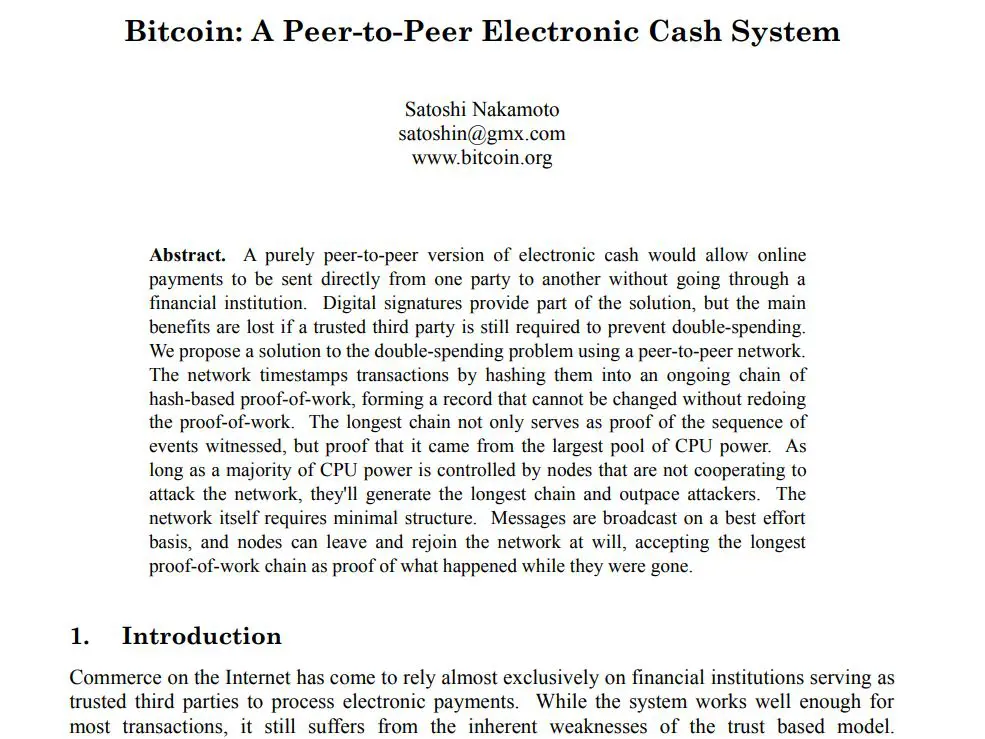As you may have already noticed, there is often talk of so-called "white papers" in the cryptocurrency sector. But what exactly are they?
First of all, the term "white paper" was originally used for so-called political "white papers", which were a collection of documents for guidance on public issues. Furthermore, the use of the term is not limited to the field of cryptocurrencies, but is common in the entire information technology (IT) environment.
If you want to find a suitable German translation for "white paper", "Arbeitspapier" is probably one of the most appropriate and common variants.
These working papers are usually written as a kind of preliminary announcement and provide an overview of the intentions and planned services as well as the (rough) technical implementation of a project.

Many people see the white paper published by Satoshi Nakamoto on November 1, 2008 entitled "Bitcoin: A Peer-to-Peer Electronic Cash System" as the big bang of the entire crypto/blockchain/DLT ecosystem in which we find ourselves today. Although there were already a number of working papers published in the years before 2008 in which resourceful computer scientists and system critics (so-called cypherpunks) shared their ideas for the implementation of a digital cash system, they all still contained problems that would limit the functionality or security of this electronic money.
Because Satoshi managed to combine various concepts to create a system that was both functional and secure, he is now revered by many people. As it is one of the most important works ever written and, at less than ten A4 pages, is also quite quick to read, every participant in the Crypto Space should have taken a closer look at it. As we are aware that there are also people who do not speak English, you can READ THE BITCOIN-WHITEPAPER HERE IN GERMAN
While Satoshi Nakamoto proved just two months later, on 3 January 2009, with the launch of the Bitcoin network, which has been running ever since, that his theoretical considerations also work in practice and brought great wealth to people who recognized this early on, white papers in the following years (and especially in the so-called ICO hype of 2017/018) unfortunately often served as a means of realizing fraudulent intentions and flushing money into the pockets of the authors.
Dubious projects often published untenable promises in white papers that could never be realized in practice, but which led unsuspecting readers to believe that they too could achieve great wealth with little monetary investment, just like the early Bitcoin investors. This led to more and more people with fraudulent intentions starting to put wild promises on paper in order to collect money without ever having the intention of writing a single line of code to implement the project. The authors were usually aware beforehand that their "idea" would never work technically. These scam papers were usually peppered with buzzwords such as "Bitcoin killer", "Industry 4.0", "Blockchain 2.0", "quantum security", "infinite transactions per second", and so on.
False promises were made that the project in question would be the be-all and end-all of distributed networks: more secure, more decentralized, more scalable, more anonymous and faster than Bitcoin could ever be. But in the end it was just one thing: BULLSHIT!
Unfortunately, these cases still exist today, albeit much less frequently than in autumn 2017. And unfortunately, there are still people who fall for them because they are too gullible and lack the technical and economic know-how to check the plausibility of the whitepapers themselves.
The expression "don't trust, verify" is a common saying in the Bitcoin scene. Unfortunately, you are not always able to verify something yourself. Here are our tips on how you can protect yourself from falling for such scams.